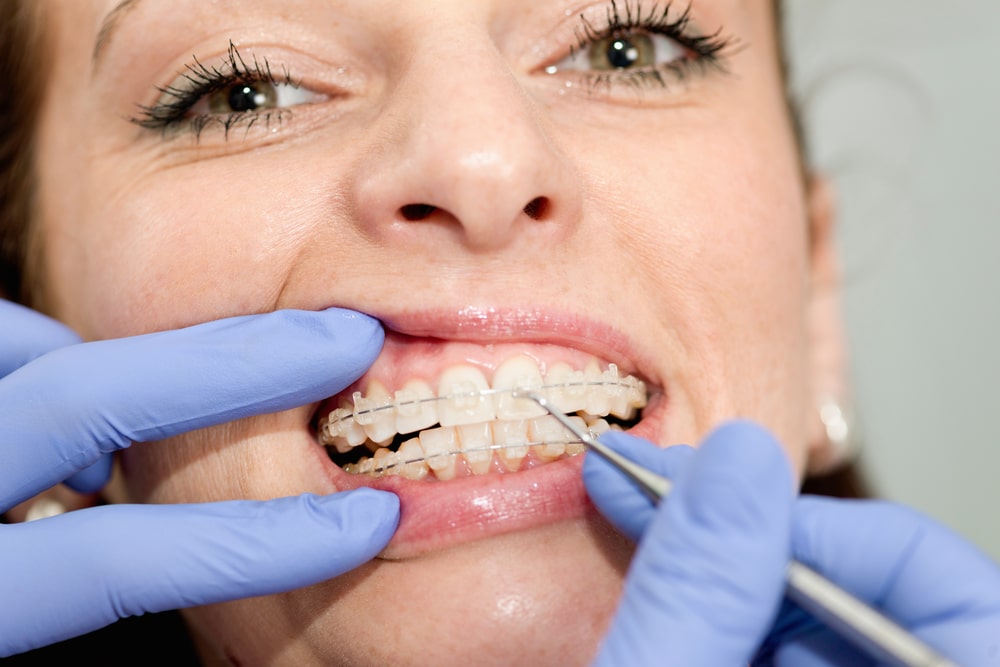Some Known Details About Legacy Orthodontics
Table of ContentsFacts About Legacy Orthodontics RevealedLegacy Orthodontics Fundamentals ExplainedMore About Legacy OrthodonticsGet This Report on Legacy OrthodonticsWhat Does Legacy Orthodontics Mean?
In addition, we supply flexible treatment timetables, versatile repayment options and a fun, pleasurable experience.An orthodontist is a dentist trained to identify, prevent, and treat teeth and jaw irregularities. They fix existing problems and are trained to recognize issues that may create in the future. Orthodontists deal with people of every ages, from kids to adults. Individuals frequently link an ideal smile with excellent health and wellness.
Malocclusion, or misaligned teeth, can lead to oral issues, including dental cavity, gum condition, and difficult or painful eating. Not every person is born with straight teeth. If you have a negative bite or large areas in between your teeth, you might intend to speak with a dental professional concentrating on orthodontic care.
A Biased View of Legacy Orthodontics
( Photo Credit Rating: DigitalVision/Getty Images) Orthodontists utilize dealt with and removable oral devices, like dental braces, retainers, and bands, to transform the setting of teeth in your mouth. Orthodontic therapy is for dental problems, including: Uneven teethBite troubles, like an overbite or an underbiteCrowded teeth or teeth that are too much apartJaw misalignmentThe objective of orthodontic treatment is to enhance your bite.
A healthy and balanced bite ensures you can eat, chew, and talk effectively. While you could assume of orthodontists as mainly for children or teens who need dental braces, they can remedy oral problems at any kind of age. Orthodontists participate in university, oral college, and orthodontic college. After college graduation, they invest 2 or 3 years in an orthodontic residency program.
All orthodontists are dentists, but not all dentists are orthodontists. Orthodontic residency programs offer intensive, focused instruction for dental professionals. They concentrate on two locations: Exactly how to properly and safely move teeth Exactly how to correctly guide growth in the teeth, jaw, and faceOnce an orthodontist has completed training, they have the choice to become board certified.
Not known Facts About Legacy Orthodontics
Misalignment, or malocclusion, is the most typical reason individuals see an orthodontist. It is genetic and is the outcome of size differences in between the top and lower jaw or between the jaw and teeth. Malocclusion leads to tooth congestion, an askew jaw, or uneven bite patterns. Malocclusion is generally treated with: Your orthodontist affixes metal, ceramic, or plastic square bonds to your teeth.
Some individuals require a headwear to help move teeth into line with stress from outside the mouth. A retainer is a custom device that keeps your teeth in location.
They can develop additional room in the mouth without having to pull teeth. Orthodontists make use of cables, medical screws, or plates to support your jaw bone.
You may need to see an orthodontist if you have: Crowding or otherwise adequate room for every one of your teethOverbite, when your top teeth come your bottom teethUnderbite, when your base teeth are too much forwardSpacing or problems with gapsCrossbite, which is when your top teeth fit behind your bottom teeth when your mouth is closedOpen bite or a vertical space in between your front bottom and upper teethMisplaced midline, when the facility of your bottom and top teeth don't line up Remedying an oral malocclusion can: Make attacking, chewing, and talking easierImprove the balance of our face and your general appearanceEase pain from temporomandibular joint conditionsSeparate your teeth and make them less complicated to clean up, helping protect against dental caries or dental caries It's typically a dental practitioner who first notices misaligned teeth throughout a routine exam.
4 Simple Techniques For Legacy Orthodontics

During your very first orthodontic consultation, you'll likely have: A dental examPhotos taken of your face and smileDental X-raysPanoramic (360 degree) X-rays of your face and headImpressions to create molds of your teethThese examinations will help your orthodontist understand exactly how to wage your therapy. clear braces. An orthodontist is a dentist that's had training to treat your teeth and jaw
An orthodontist is focused on your bite, so something like a broken tooth would be taken care of by a dentist. Orthodontists are concentrated on your bite, or the method your teeth fit with each other, and the straightness of your teeth.
Ever before asked yourself how celebs always seem to have perfectly lined up teeth? The response usually hinges on the knowledgeable hands of an orthodontist. However just what does an orthodontist do? Orthodontists are oral professionals who concentrate on dealing with irregularities in the teeth and jaws. Their expertise exceeds just creating a stunning smile; it encompasses improving your general oral health and function.
Our Legacy Orthodontics PDFs

While dental braces are one of the most commonly recognized orthodontic treatment, orthodontists have a diverse toolkit at their disposal. The my link certain strategy selected relies on the seriousness of the case, the person's age, and individual preferences. These tried-and-true dental braces utilize a system of brackets adhered to the teeth and connected by wires.
These detachable trays are customized to progressively change the teeth's setting. In instances of slim jaws, palatal expanders can be utilized to create room for proper tooth positioning.